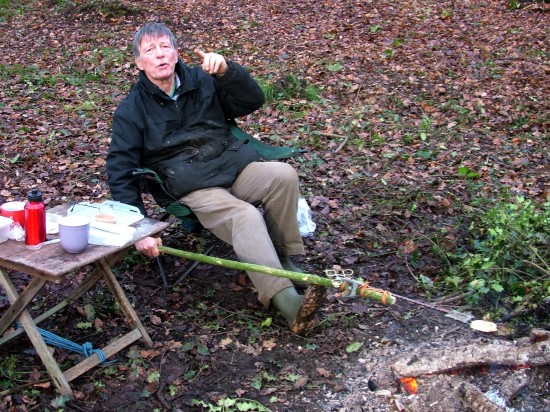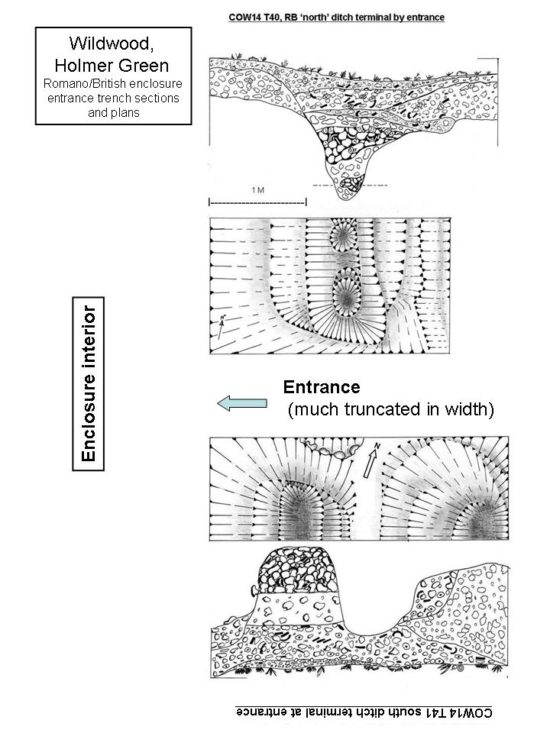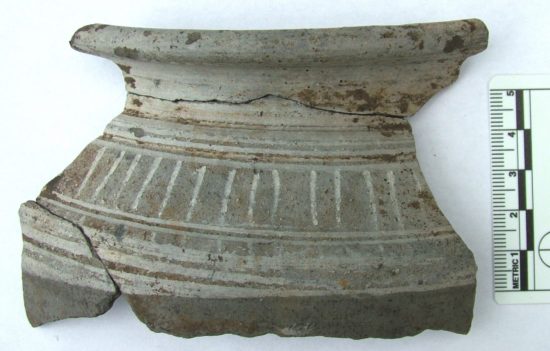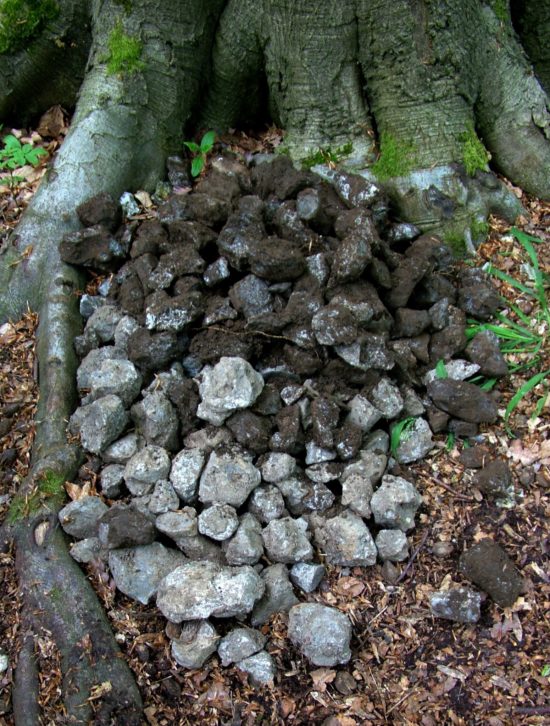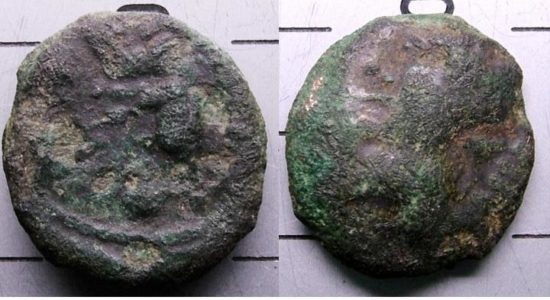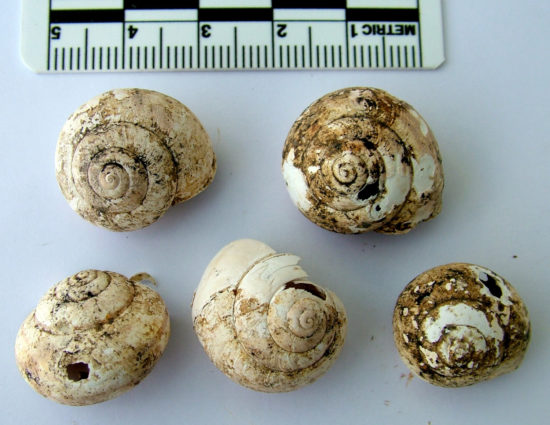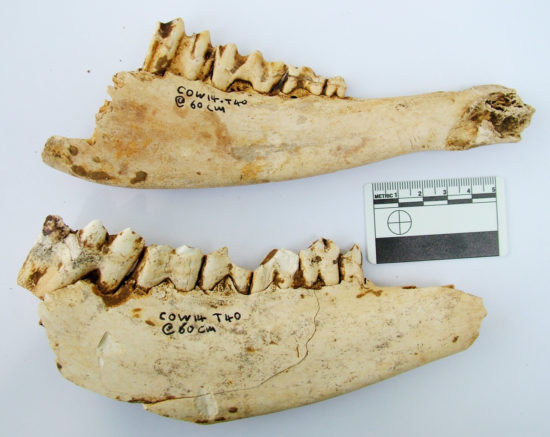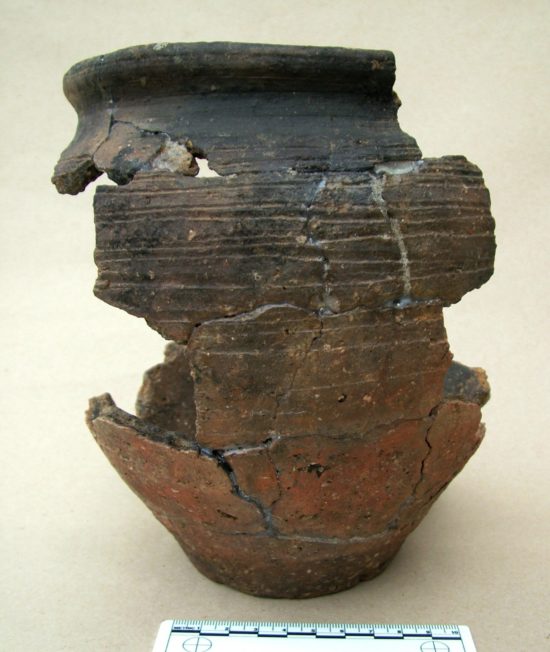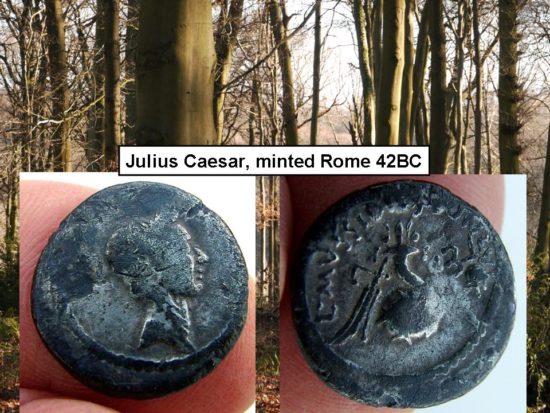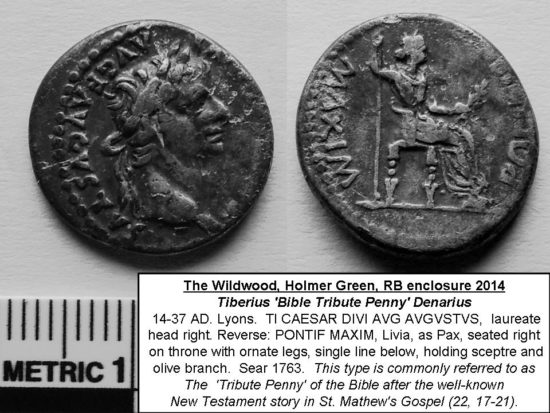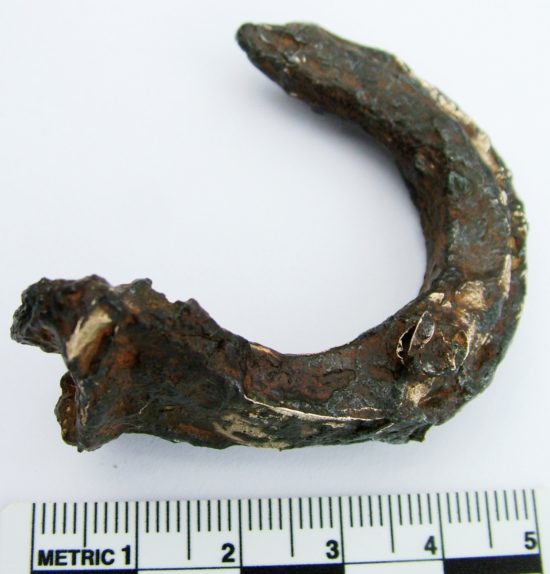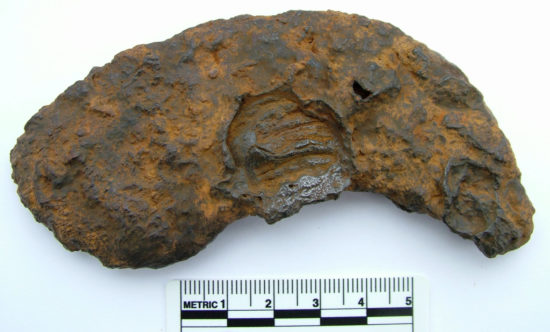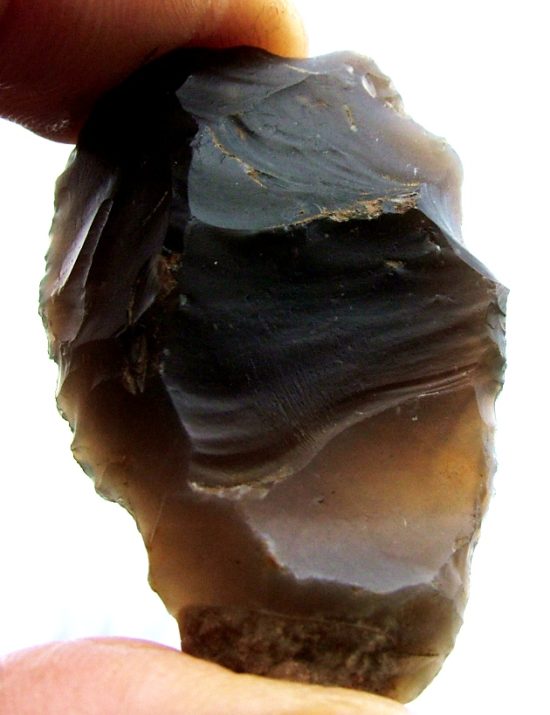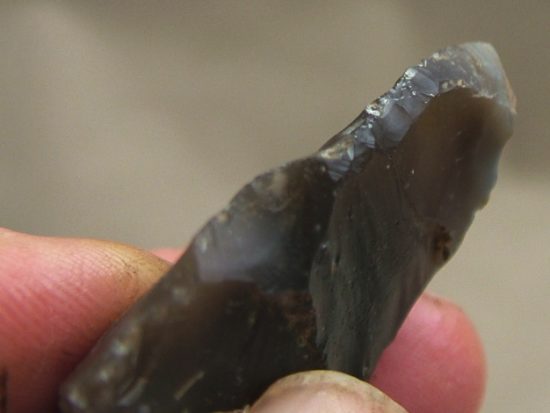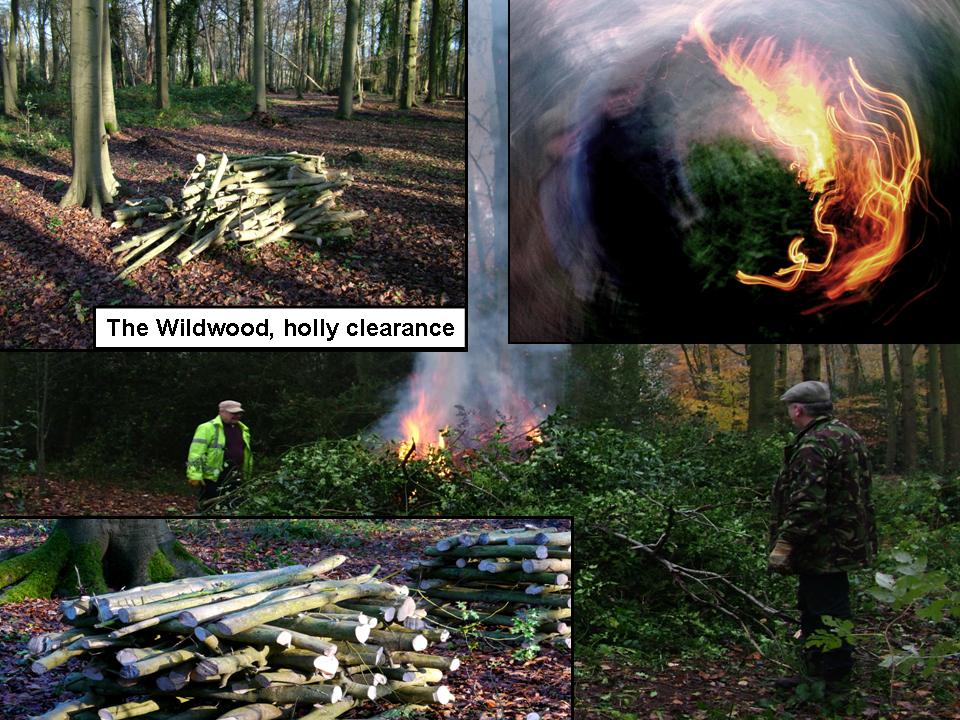
The Wild wood is still giving up its secrets, albeit slowly. Archaeological exploration started rather late due to a wet spring but continued well into the autumn with each carefully dug and recorded trench revealing a little more of life from prehistory to the medieval period.
From the very first time I surveyed the Romano British enclosure I had indicated where I thought the entrance would be although the evidence on the ground was tentative due to the surrounding ditch being in-filled on abandonment c100AD. After several years of digging to define the general enclosure this was the year that I was able to establish the existence of an entrance.
Call it sixth sense or luck, but with my two helpers, Phillip and Barrie we came directly over the butt ends of both terminating ditches. The infill conformed to the previous trenches dug across the periphery ditches of the RB site in that much of the bottom section consisted of large flints dumped without soil followed by a variety of clay/loam/flints/ashes and much blue/grey burnt flint. Interspersed amongst this infill is a large amount of broken pottery with the majority having clean un-abraded edges. Dating has shown that the time span of this pottery is in excess of 100 years containing as it does late Iron Age to early Roman pottery c 100AD creating the mystery of where all this pot material originally came from.
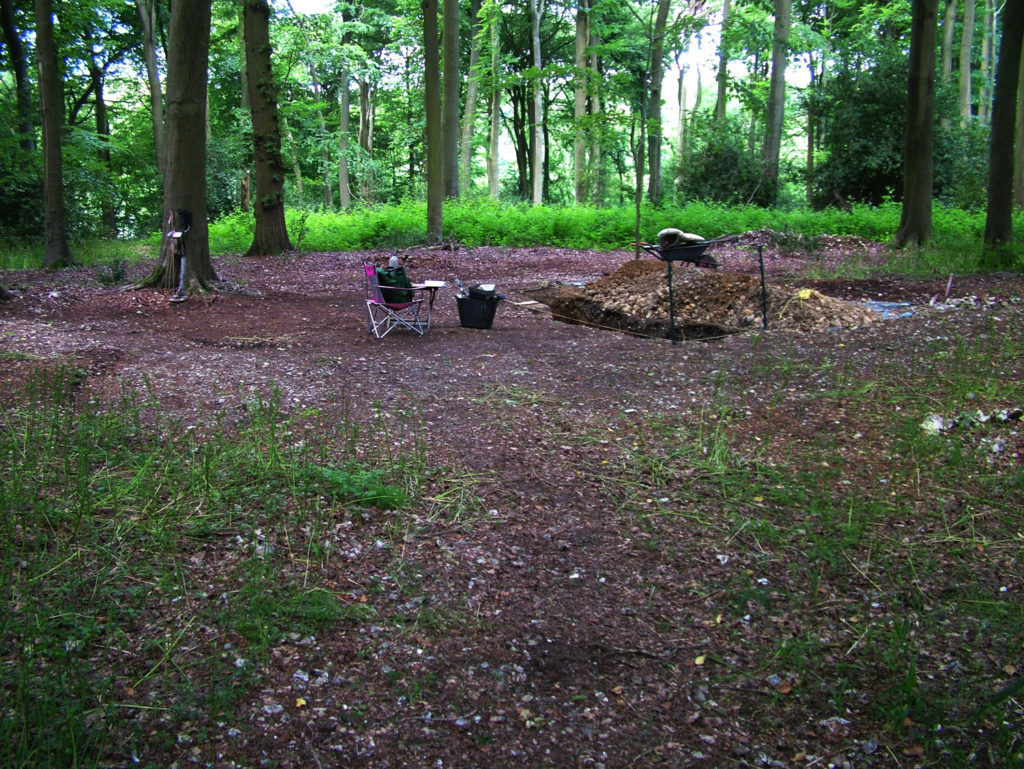
The mystery is compounded by the fact that this pottery infill is not stratified chronologically as would be normal with a gradual build-up of discarded waste over a period of time. Roman material can be found at the bottom (up to 1m-30) whilst Iron Age pot can be recovered from close to the surface. Although the enclosing bank is clearly discernible there is no outward indication of the accompanying ditch at ground level. All the evidence points to an un-hurried systematic levelling of the ditches on the eventual abandonment of the site c100 AD. The ditches may well have been cleaned out prior to this infilling as in no case during the excavations has there been any evidence of early primary deposits.
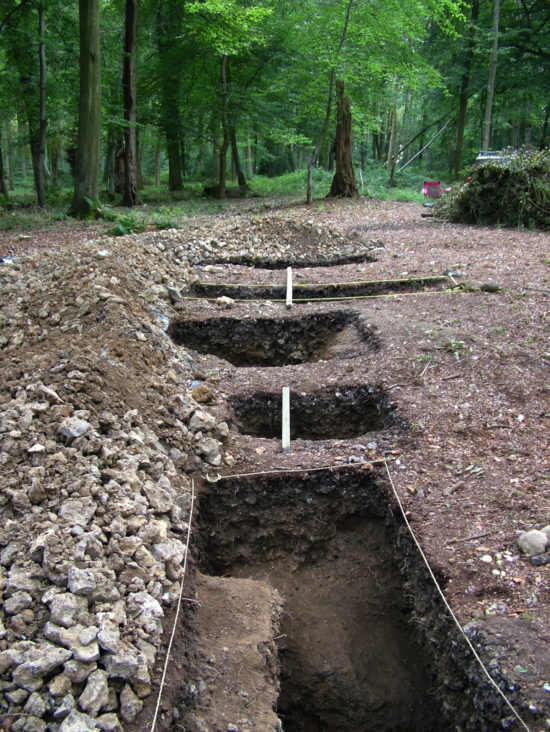
Generally speaking the soil PH is such that bone does no survive the acidic soil; the exception to this is where bone has been trapped within the dry cavities between the dry flints whilst being dumped in the ditches, I have some well persevered animal bone plus some snail shells. Identification of the snail shells could give an indication of the environment at the time of the ditch filling (snail experts please get in touch). Two interesting finds either side of the entrance were a small coin of the Celtic English King Cunobelin who ruled from the late first century BC until the 40s AD, the other was a simple late Iron Age pin brooch.
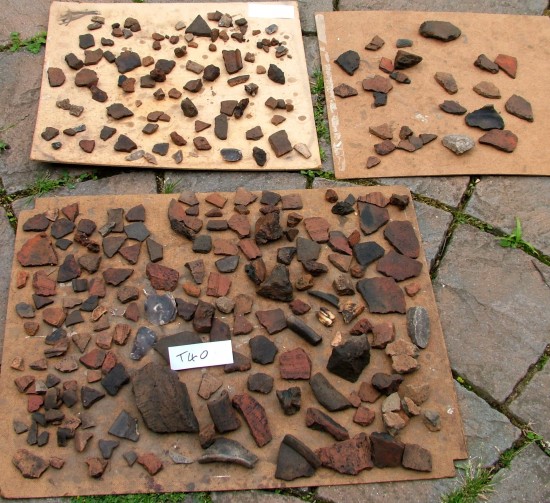
There are two distinct enclosures in the Wildwood and they are adjacent to each other, enclosure one is very different from the aforementioned enclosure two (RB) and is over 1000 years younger being dated 12th/13 century. There is still some speculation as to what this small moated site represents and recent finds may force a revision of my original thoughts that is was an animal enclosure. Excavation has ceased at the moment due to excessive wet weather but I still spend about 3 days a week with my two helpers Barrie and Phillip clearing bramble and the invasive holly from the areas close to the known archaeology. The best of the holly is stacked to season slowly as it will be used for woodturning, it is the whitest wood ever with a very fine grain.
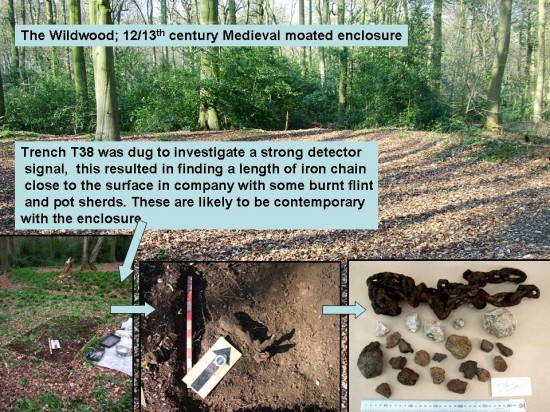
One of these cleared areas is close to the medieval enclosure and clearing has allowed a metal detector survey to be undertaken. Most of the wild wood archaeology is on the surface due to lack of historical land disturbance or subsequent soil build up or deposition, this means that metal artefacts are recovered from just below the leaf-mould cover without damage being done to any sub soil archaeology.
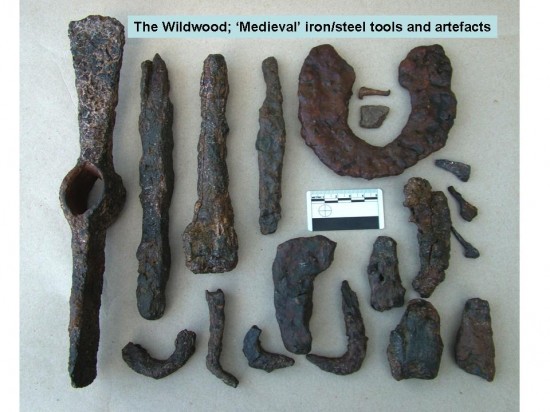
2014 finds from this area are intriguing ranging as they do from a suspected brass inlaid dagger or sword quillon to medieval horse and ox shoes and horse-shoe nails to woodworking tools. These include a twybill/mortise axe used in making mortise joints in timber framed buildings and some substantial woodworking chisels, and a lot of yet unidentified iron objects that only x-raying will sort out. We do have evidence of iron smelting in the immediate vicinity and dumps of iron slag in the Wildwood itself, so one of the questions is whether iron working was carried out here also. Were these medieval men not only producing iron by smelting but forging and working it up into tools, chain (we have a lot of chain) and other useful items of the time? If so, were they producing these goods for their own/local consumption or to trade further afield? The woodworking tools could have been part of a craft industry or they could indicate that they were used to construct a building/s on site.
Worked flint tools are still found, mostly as random surface finds. As the weather improves during 2015 work will continue on the two RB enclosure corners and later in the summer a very careful examination of the undisturbed wide entrance area between the two entrance ditches, I consider that this area is possibly the most important of the whole site.
